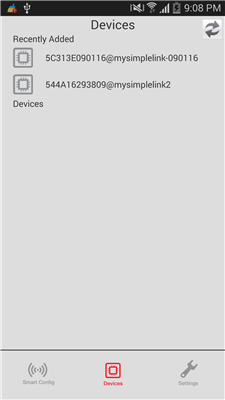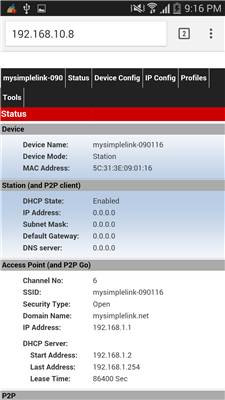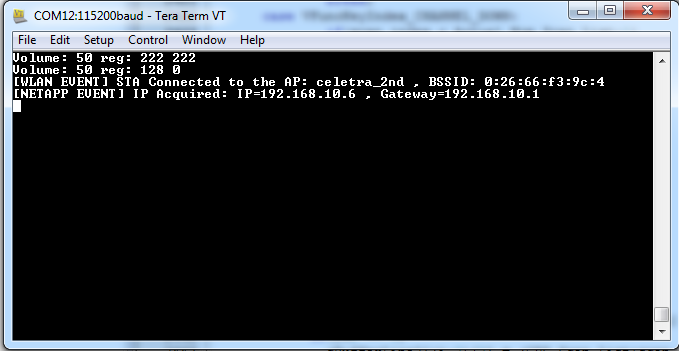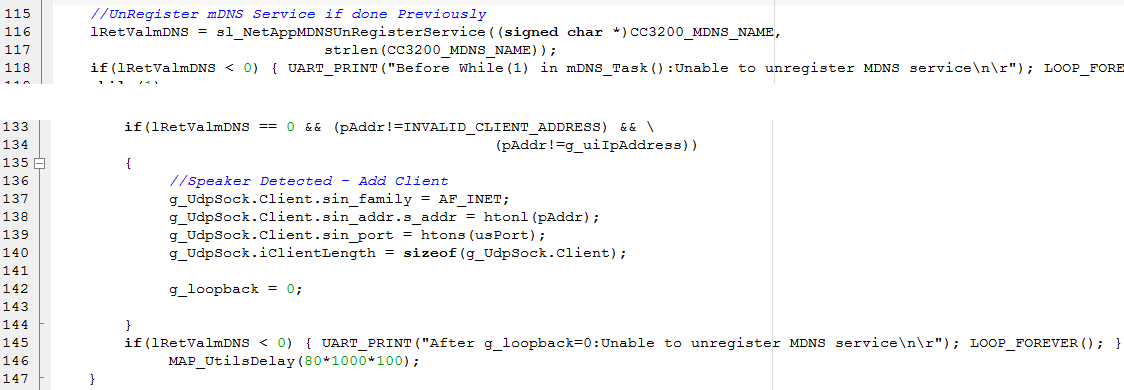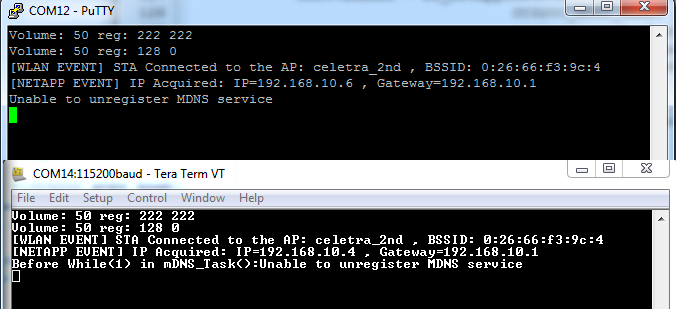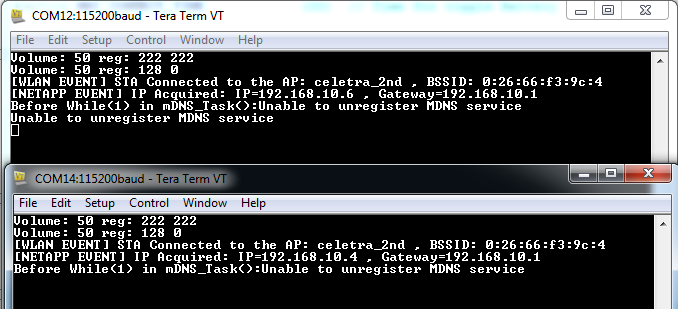I have set of Launchpad Rev 4.1 and Audio booster packs 3.0-A
I'm trying to test audio example.
1. Both launchpads were formatted, updated service pack (servicepack_1.0.0.10.0.bin)
2. Compiled all lib projects & audio demo app in IAR.
3. Flashed the audio demo ( UniCast ) using Uniflash ( Hardware setup SOP-2 closed and J2 , J3 open)
4. SOP-2 open , J2 & J3 closed, connected Audio booster pack to launchpads as mentioned in guides.
5. Connected only earphone/speaker on both launch pads. No microphones connected to Line-IN on both launchpads.
6. Both launchpads are powered through USB.
I can see all three LEDs ( D5, D6, D7 ) are ON. Just after power on, D5, D6 are ON, red LED glows few seconds after.
Open Wi-Fi Starter App on my Android S4 smartphone, Enter my office WiFi AP details ( Network Name: SSID, Password: xxxxxx). This AP has WPA2 security.
If I click on these names, the settings are opened in browser, but both launchpads webpage looks different.
Please advice what to do from here on. I'm pretty sure on the hardware side steps like to on/off the Line-IN and Line-OUT etc... Unable to figure out from here on, how to configure these two launchpads to execute the demo.
Thank you
What to do next ?


